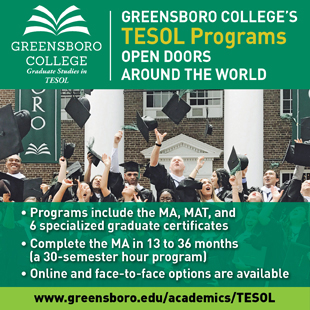
A new center at the University of Arizona is one of only four designated by the US Department of Education to lead a collective effort to empower Tribal communities across the country to revitalize and maintain their languages. A five-year grant for $1.7 million from the Department of Education began funding the new West Region Native American Language Resource Center in the fall. The new center, administratively housed in the university’s American Indian Language Development Institute, is one of four inaugural centers doing similar work. The others are a national center at the University of Hawai’i and two regional centers at the University of Oregon and Little Priest Tribal College in Winnebago, Nebraska. The U of A center will primarily serve Indigenous communities in Arizona, California, Nevada, and Utah.
A Track Record of Tribal Language Revitalization
The new center will be largely an extension of what the university’s American Indian Language Development Institute, or AILDI, has been doing for decades. Established in 1978, AILDI’s core programming involves bringing Tribal members to campus for workshops to promote the use of Tribal languages as a key aspect of revitalization efforts. Ofelia Zepeda, a Regents Professor of linguistics in the College of Social and Behavioral Sciences and director of AILDI, serves as co-principal investigator for the new center. Sheilah E. Nicholas, a professor in the College of Education and AILDI faculty member, will serve as center director. Zepeda and Nicholas have a decades-long track record of helping Tribal communities revitalize and promote the use of their languages, making AILDI the perfect home for the new center.
“When we looked at the call for proposals for the grant, the things it listed were the things we were doing for years,” said Zepeda, a renowned Tohono O’odham linguist who wrote the first grammar book in the Tohono O’odham language. The grant will also pay for much of the training for Tribal communities. The new center will more formally establish the network of partnerships across Tribal communities and other institutions that have applied the AILDI model in service to local Tribal community language-revitalization efforts: the University of Oregon’s Northwest Indigenous Language Institute, and the Hopilavayi Summer Institute from 2004 to 2010 in the Hopi community in northeastern Arizona, Nicholas said.
Partnerships with Tribes that tailor Indigenous language education to each community will be the core of the center’s work, Zepeda and Nicholas said, adding that each community has unique linguistic needs deeply linked to geographic location. The western US is the most linguistically diverse region in the country, with California alone being home to more than 100 Indigenous languages, Nicholas said. Much of the center’s programming will involve an instructional technique known as Indigenous language immersion, which Nicholas has taught to Tribal educators since the 1990s. Indigenous language immersion involves developing teaching methods that use the language as the medium of instruction 50 to 100% of the time.
These techniques, influenced by French immersion in Canada, were first applied by the Mohawk Indigenous community in North America and later became an Indigenous language immersion school movement for the Hawai’ian language and Māori, the language of the Indigenous Polynesian people of New Zealand. AILDI has helped implement Indigenous language immersion instruction in communities across the US, and the new center will allow the institute to expand support of community language revitalization efforts into the education systems serving Indigenous communities, Zepeda and Nicholas said.
One challenge for Indigenous language teachers, who are often so busy working in the classroom, is finding enough time and resources to evaluate their curriculums and show how effective they are.
Emerging research, she added, confirms that Indigenous language immersion education is not subtractive but additive—students are not only academically excelling but also learning their community’s ancestral language and developing a strong cultural identity and a desire to give back.
A Network of Experts for Tribal Linguists
Growing up on the Tohono O’odham Nation, Ronald Geronimo learned O’odham as his first language and uses it every day.
Many O’odham children today do not speak the language fluently and only know a few vocabulary words, Geronimo said.
“Now, children look at the language as something only adults know or use,” Geronimo said. “Some of them think that you don’t learn the language until you get older because they only see older people speaking it.” As co-director of Tohono O’odham Community College’s O’odham Ñi’okǐ Ki, or O’odham Language Center, Geronimo helps lead a mission to “reclaim” the O’odham language—returning its usage to everyday life. To do that, Geronimo and his colleagues at the center have developed programs to teach O’odham in schools and immerse students in the language.
Geronimo has worked for years with AILDI to develop the center’s programs. They include partnering O’odham language experts with elementary educators to help them teach courses in the language, as well as teaching parents who may also not be fluent how to use the language more often around their children at home.
“We’re trying to have a comprehensive approach, not just to doing immersion in the school but also with the parents and in the communities, with the overall goal of having the child grow up seeing the language,” he said. The federal grant that established the new center, Geronimo said, will provide a valuable network where he and other Tribal linguists can connect and share resources toward a shared goal to support Indigenous language revitalization.
“We’ll have a lot more resources to do what we want to do, and maybe we don’t have the funding to do it, but maybe they can assist in that way,” Geronimo said.
Ultimately, Zepeda said, how the center works will be largely up to the Tribal communities that come to use its resources.
“We’ll have our own ideas to meet the obligations of the grant,” Zepeda said. “But we’ll also be listening to the communities about what they want and what they need.”
Kyle Mittan, University of Arizona Communications






